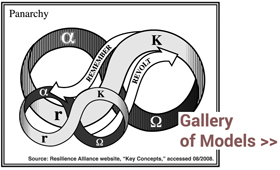Think of everything humans create: from languages, to social institutions, scientific theories, works of art, and all the various artifacts that populate our lives.
In philosopher-of-science Karl Popper’s 1978 lecture “Three Worlds,” he classified these products of human creation as belonging to “world 3.”
According to Popper’s schema, world 1 consists of the physical and biological world, the world of entities and forces, living and non-living, and world 2 represents our minds, the cognitive and psychological world.
“Our minds are the creators of world 3,” said Popper, “but world 3 in its turn not only informs our minds, but largely creates them.” Through us, our creations then have a causal effect on world 1. In other words, we shape our world, and our world shapes us.
Among the many implications of this model, one is the sharp distinction that it presents between scientific theories, which are part of world 3, and the various entities and forces that are scientifically referenced in worlds 1 and 2. For example, the greenhouse effect, although it references a force in world 1, is itself part of world 3, along with the plays of Shakespeare.
Also interesting is the perspective this model enables on the views of both materialists and constructivists, those who emphasize the primacy of world 1 or world 2, respectively.
While Popper offers no summary term for the various creations in world 3, in systems and design writing they would often be called “models” — as I’ve called Popper’s own creation.
It might seem odd to describe the English language, or the U.S. Constitution, or the greenhouse effect, or the plays of Shakespeare as models, per se, but this bridge to the systems and design literature lets us test the strength of some crosswalks.
For example, here’s one list of the functions of models, (slightly edited) from Gordon Lippitt’s 1973 Visualizing Change: Model Building and the Change Process (which I also referenced in a post on attributes of the designer):
- Representation — A model can be used to represent a complex situation and to provide means of making changes in it. It may also help to uncover new relationships between variables.
- Guidance — The model inherently provides rules or guidelines for dealing with situational variables. It can illustrate manipulative constraints and the interdependence of the variables.
- Interpretation — A model can assist in interpreting and testing theory and in establishing a framework for experimentation and discussion.
- Visualization — A model can be used to visualize a change process or an activity, either as an aid to the researcher or change agent, or as a teaching tool.
- Prediction — In certain cases where experimentation is impossible, or impractical, a model can help in predicting the outcome of given events or changes. Its value in this function will be determined by the extent to which the interrelationships are accurately delineated and understood.
- Recreation — Model building can be fun to formulate and can serve as relaxation for the change practitioner. Some of us refer to it as “professional doodling,” but it can be both meaningful and enjoyable.
- Communication — Perhaps the reason communication is not usually included as an important function is because it is considered to be implied in a model. But communication by implication instead of communication by design may be a reason why so many models are not efficacious. A model should execute only “one-way” communication. There are three requisite components for this type of message sending: the source (model builder), the channel (the model) and the receiver (the one directly or indirectly using the model).
How well does this list cover the functions of the various types of models I mentioned?
[Update: Forgot to mention, for more on Popper’s Three Worlds, see reference below.]
Midgley, G. 2000. Systemic Intervention: Philosophy, Methodology, and Practice.
Russell, J. Y. 2010. “A Philosophical Framework for an Open and Critical Transdisciplinary Inquiry,” in Brown, V. A. et al. (eds.) Tacking Wicked Problems: Through the Transdisciplinary Imagination.
Umpleby, S., et al. 2012. The Science II Team: A Report from the 2012 IFSR Conversation Sankt Magdalena, Linz, Austria. (link pdf)

